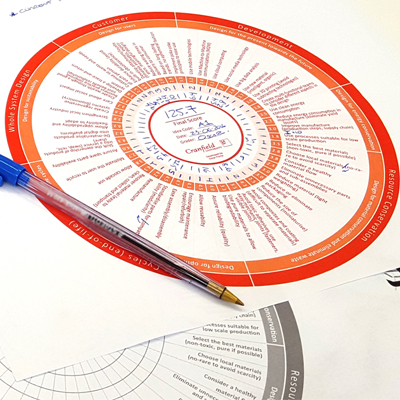Turning ideas into reality
Innovation comes in many different forms and one of the most fundamental, intriguing and potentially valuable is breakthrough innovation.
Such innovations have always played a significant role in the development of the modern world by creating revolutionary new products, services and processes. While most forms of innovation, such as incremental, disruptive or open innovation, are generally well understood, very little is known about how breakthrough innovations actually originate. They are characterised by their radical departure from conventional practice with and an apparent lack of an obvious connection to existing knowledge; appearing as creative leaps and insights, from within the mind of an individual, as the ‘original idea’ from which all else subsequently follows.
Cranfield’s Breakthrough Innovation Lab sits within the framework of the renowned Cranfield Centre for Design Engineering; a rapidly expanding, pan-University facility, which works closely with colleagues from across the campus. At the lab, we try to better understand the nature of breakthrough innovations through a combination of cutting-edge industry and academic collaborations. Our high-calibre researchers work on creating truly original ideas, combining traditional and advanced methods and technologies, to help unlock these ‘original ideas’ and the extreme problem-solving capabilities often required to deliver such breakthroughs.
The community aims to create the environment and state-of-the-art facilities for generating and studying the creation of breakthrough innovations. It will enable potential innovators to develop their ideas through Technology Readiness Levels (TRLs), from basic principles and ideas (TRL 1) to near-production level system prototypes (TRL 7) in some cases.
The potential impact and commercial value of our work for organisations often means that much of what we do remains confidential. We seek out the most creative individuals, from diverse backgrounds such as mathematics and music, and from across our MSc programmes, PhD community and directly from industry, to explore their creative potential and their ability to be truly innovative thinkers.
We support the other communities of practice within the Centre for Design Engineering and partner with our industrial clients and other schools within the University, providing innovation workshops and a valuable bridge between research and industry. The community of practice is currently focused on product innovation but will extend to services and systems in the future.
Outputs
- Hennigs J, Parker A, Collins M, Jiang Y, Kolios A, McAdam E, Williams L & Tyrrel S (2019) Planning and communicating prototype tests for the Nano Membrane Toilet: A critical review and proposed strategy, Gates Open Research, 3 Article No. 1532.
- Rehman S, Tiwari A, Turner C & Williams L (2018) A framework for innovation outsourcing, International Journal of Business Innovation and Research, 16 (1) 79-111.
- Zhu B, Ma Z, Wu N & Williams L (2018) Influence of original manufacturer's patent protection on technological innovation strategy of remanufacturing supply chain, Computer Integrated Manufacturing Systems, 24 (9) 2329-2340.
- Haines-Gadd M, Hasegawa A, Hooper R, Huck Q, Pabian M, Portillo C, Zheng L, Williams L & McBride A (2015) Cut the crap; Design brief to pre-production in eight weeks: Rapid development of an urban emergency low-tech toilet for Oxfam, Design Studies, 40 (September) 246-268.
- Collins M & Williams L (2014) A three-stage filter for effective technology selection, Research-Technology Management, 57 (3) 36-42.










